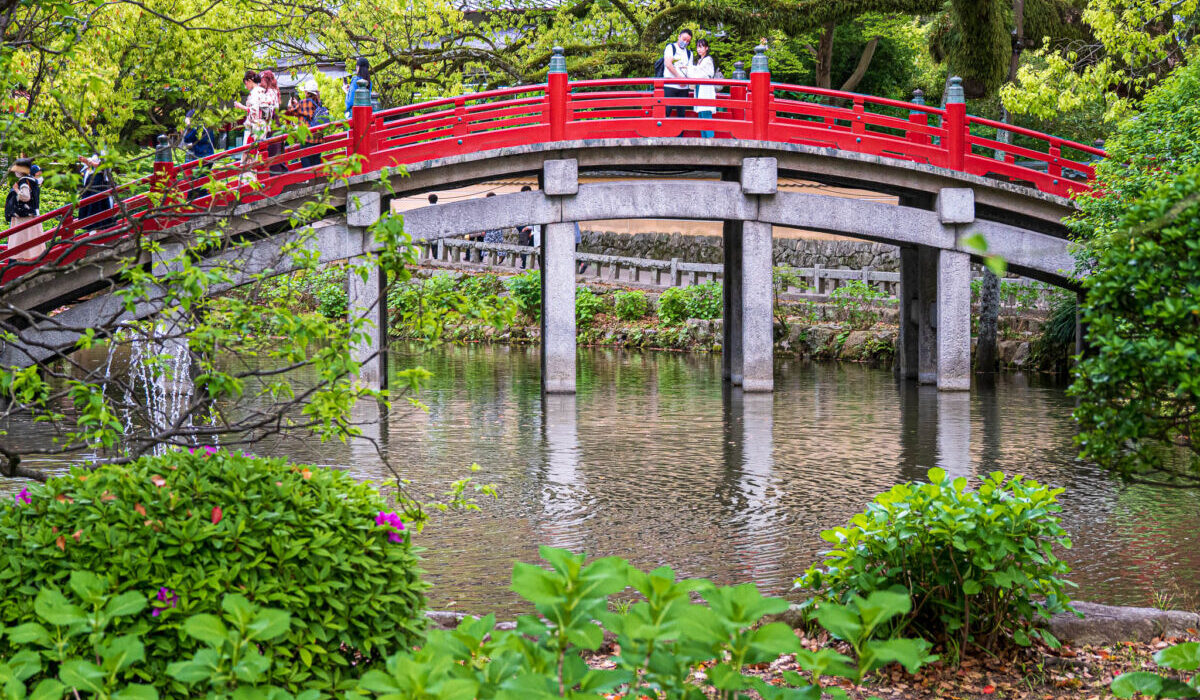Japanese Gardens are so lovely. They contain so many interesting elements, each with its own significance. For example, don’t you just love the marvelous red bridges that seem so quintessentially Japanese. They are called hashi.
Yep, they are stunning. The gorgeous red. The graceful arch. Typically a beautiful setting.
They came from Chine some time during the Heian period in Japan which was 794 to 1185.
Yes, they are meant to get the visitor from here to there often over ponds or bodies of water that the Japanese garden designers love so much.
But they mean more than that.
They are designed to slow you down and be meditative. They symbolize the journey between the mortal world and the afterlife, cleansing one of worldly burdens.
Clearly they are meant to transport the visitor from the world of people to the world of nature.
I have visited a number of these bridges on my trips to Japan and in U.S based Japanese gardens but was particularly taken with the one at Dazaifu Shrine near Fukuoka on Kyushu in Japan. This bridge is built in three parts representing the past, present and future. One part is pictured below.
Red is extremely important in Japanese culture so there’s no accident about the vivid spots of color in the midst of greenery.
These encourage you to feel one with nature. I hope you enjoy these images of bridges I encountered in Japan.

If you are enjoying the Japan blog posts, you might be interested in knowing that I am doing a presentation at Aquinas College, Lifelong Learning program on November 30.
Registration for the Fall 2 opened on October 9.












